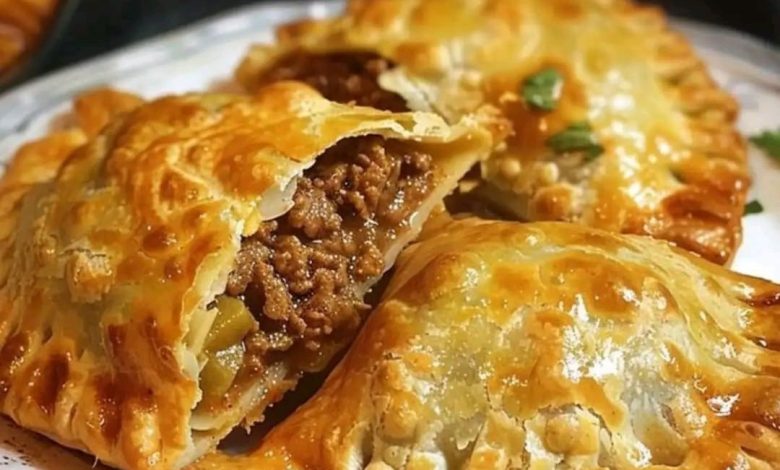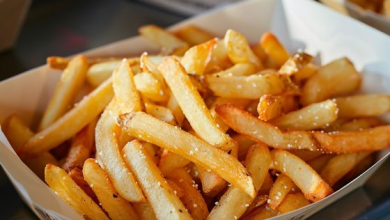Empanadas: A Culinary Journey Through Flavors and Cultures

ADVERTISEMENT
Empanadas: A Culinary Journey Through Flavors and Cultures
Empanadas are a beloved dish that has captured the hearts and taste buds of people around the world. These savory pastries, filled with a variety of ingredients, are enjoyed across many cultures, each adding its unique twist to the recipe. From Latin America to Europe, empanadas have become a staple in many cuisines, celebrated for their versatility, portability, and delicious taste.
The Origins of Empanadas
The word “empanada” comes from the Spanish verb “empanar,” which means “to bread” or “to wrap in bread.” The concept of encasing a filling in dough and baking or frying it is ancient, with early versions of empanadas appearing in medieval Iberia. These early empanadas were likely influenced by the Moorish pastries of the Middle East, which were brought to Spain during the Moorish occupation.
As Spanish explorers and colonists spread across the globe, they brought their culinary traditions with them, including the empanada. Over time, the dish evolved in different regions, incorporating local ingredients and cooking methods. Today, empanadas are a quintessential part of many cuisines, each with its own unique variations.
Varieties of Empanadas Around the World
Empanadas are incredibly versatile, with countless regional and national variations. Here are some of the most popular types of empanadas from around the world:
- Argentine Empanadas: In Argentina, empanadas are a national dish, with each region offering its own version. Common fillings include ground beef, chicken, and ham and cheese, often seasoned with cumin, paprika, and other spices. The dough is usually made from wheat flour and can be baked or fried. In the northwestern regions, empanadas might also include potatoes, olives, and hard-boiled eggs.
- Chilean Empanadas: Chilean empanadas, known as “empanadas de pino,” are typically filled with a mixture of ground beef, onions, raisins, olives, and hard-boiled eggs. The dough is often thicker and the empanadas are usually baked, resulting in a golden, flaky crust.
- Spanish Empanadas: In Spain, empanadas are often larger and made in a pie-like form, sliced into pieces for serving. Common fillings include tuna, chicken, or chorizo, often mixed with tomatoes, onions, and peppers. The Galician empanada is particularly famous, typically filled with fish or seafood.
- Filipino Empanadas: The Philippines, a former Spanish colony, has its own version of empanadas. Filipino empanadas are usually made with a sweet, flaky dough and filled with a mixture of ground meat (often pork or beef), potatoes, carrots, and sometimes raisins. They are typically deep-fried, giving them a crispy exterior.
- Colombian Empanadas: Colombian empanadas are often made with a corn-based dough, giving them a distinct texture and flavor. Common fillings include shredded beef, chicken, or pork, along with potatoes and spices. These empanadas are usually deep-fried, resulting in a crunchy exterior.
- Puerto Rican Empanadas: Known as “empanadillas” in Puerto Rico, these empanadas are often filled with seasoned ground beef, cheese, or seafood, and are typically fried. The dough is usually made with wheat flour, and the fillings often include a mix of sofrito, olives, and capers for added flavor.
Making Empanadas at Home
One of the joys of empanadas is that they are relatively easy to make at home, allowing you to customize the fillings to your liking. Here’s a basic guide to making traditional Argentine beef empanadas:
ADVERTISEMENT
Ingredients:
- 2 cups all-purpose flour
- 1/2 cup unsalted butter, chilled and cubed
- 1/2 teaspoon salt
- 1/3 cup cold water
- 1 pound ground beef
- 1 large onion, finely chopped
- 1 teaspoon paprika
- 1/2 teaspoon cumin
- 1/2 teaspoon oregano
- Salt and pepper to taste
- 1 hard-boiled egg, chopped
- 1/4 cup green olives, chopped
- 1 egg, beaten (for brushing)
Instructions:
- Make the Dough: In a large bowl, combine the flour and salt. Add the butter and mix with your fingers until the mixture resembles coarse crumbs. Gradually add the cold water and mix until the dough comes together. Knead the dough briefly, then wrap it in plastic wrap and refrigerate for at least 30 minutes.
- Prepare the Filling: In a large skillet, cook the ground beef over medium heat until browned. Add the chopped onion and cook until softened. Stir in the paprika, cumin, oregano, salt, and pepper, and cook for another 5 minutes. Remove from heat and let the filling cool. Once cooled, mix in the chopped hard-boiled egg and olives.
- Assemble the Empanadas: Preheat the oven to 375°F (190°C). Roll out the dough on a floured surface to about 1/8-inch thickness. Cut out circles using a round cutter (about 4 inches in diameter). Place a spoonful of the filling in the center of each dough circle. Fold the dough over to create a half-moon shape, and press the edges to seal. Crimp the edges with a fork.
- Bake: Place the empanadas on a baking sheet lined with parchment paper. Brush the tops with the beaten egg. Bake for 20-25 minutes, or until the empanadas are golden brown.
- Serve: Enjoy your empanadas warm, with a side of chimichurri sauce or a simple salad.
Empanadas in Modern Cuisine
Empanadas continue to evolve, with chefs and home cooks experimenting with new flavors and techniques. Today, you can find empanadas with a wide range of fillings, including vegetarian options, seafood, and even sweet versions filled with fruits or chocolate. The versatility of empanadas makes them a perfect canvas for creativity in the kitchen.
In many parts of the world, empanadas are a popular street food, offering a convenient and satisfying meal on the go. They are also a favorite at family gatherings, celebrations, and holidays, where they are often served as appetizers or main dishes.
Conclusion
Empanadas are more than just a delicious treat; they are a culinary tradition that spans cultures and continents. Whether you enjoy them as a quick snack or a hearty meal, empanadas offer endless possibilities for flavor and creativity. As you explore the world of empanadas, you’ll discover the rich history and cultural significance behind each bite, making them a truly global dish that brings people together.
ADVERTISEMENT
So the next time you’re looking for a dish that’s both comforting and exciting, consider making or trying empanadas. With their golden, flaky crust and flavorful fillings, empanadas are sure to become a favorite in your culinary repertoire.




